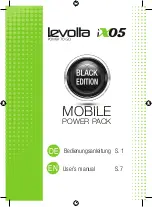
GB
- 16 -
Switch position 2:
2nd setting – 50-550°C / 250 liters/min.
Switch position 3:
3rd setting – 50-550°C / 500 liters/min.
Note:
The temperature can only be adjusted in setting 2
and 3.. You can do this by turning the temperature
setting wheel (6) variably back and forth between
positions 1 – 9. The LED display (5) shows by 6
switch positions the temperature level that applies
at the moment.
In switch position 1 the LED display (5) goes o
ff
completely.
Note:
Switch position 1 is a cold air setting at 50 °C.
This is when the hot air gun needs to be cooled
down faster so that you can change the nozzles
more quickly and avoid the danger of burns.
6.2 Possible uses for the hot air pistol:
•
Removal of paint and lacquer.
Attention!
Hazardous or poisonous gasses may be
produced while removing paint or lac-
quer. Be sure to provide adequate venti-
lation.
•
Removal of stickers and decorations.
•
Loosening of rusted or tightly fastened nuts
and metal screws.
•
Thawing of frozen pipes, door locks, etc.
Attention: no not attempt to thaw plastic or
synthetic pipes.
•
Accentuation of natural wood grains before
staining or lacqueing.
•
Shrinkage of PVC packaging foils and insula-
tion tubes.
•
Waxing and de-waxing of skis.
•
Stationary use (see Fig. 4)
Danger! Intensive heating means a higher
risk of
fi
re and explosion! Ensure good venti-
lation. Harmful and/or toxic gases and vapors
may be emitted.
6.3 Selecting the right nozzle
•
The glass protection nozzle (7) is designed to
protect e.g. glass panes from overheating by
diverting the hot air. For removing paint.
•
The wide jet nozzle (8) ensures uniform air
distribution on small surfaces.
•
The reducer nozzle (9) provides a targeted jet
of heat for corners and for soldering work.
•
The reflector nozzle (10) is designed for sol-
dering and shaping tubes, for defrosting water
pipes and for shrinking insulating hoses.
•
Fit the corresponding nozzle attachment onto
the nozzle (1) on the device.
Warning!
Allow the device to cool down before you change
the nozzle.
6.4 Removing the guard hood (Fig. 5)
The removable guard hood (4) can be removed to
facilitate work in con
fi
ned spaces.
Hazard!
Note that there is then an increased risk of
fi
re
and burns.
7. Replacing the power cable
Danger!
If the power cable for this equipment is damaged,
it must be replaced by the manufacturer or its
after-sales service or similarly trained personnel
to avoid danger.
Anl_TE_HA_2000_E_SPK1.indb 16
Anl_TE_HA_2000_E_SPK1.indb 16
14.01.15 15:07
14.01.15 15:07
















































